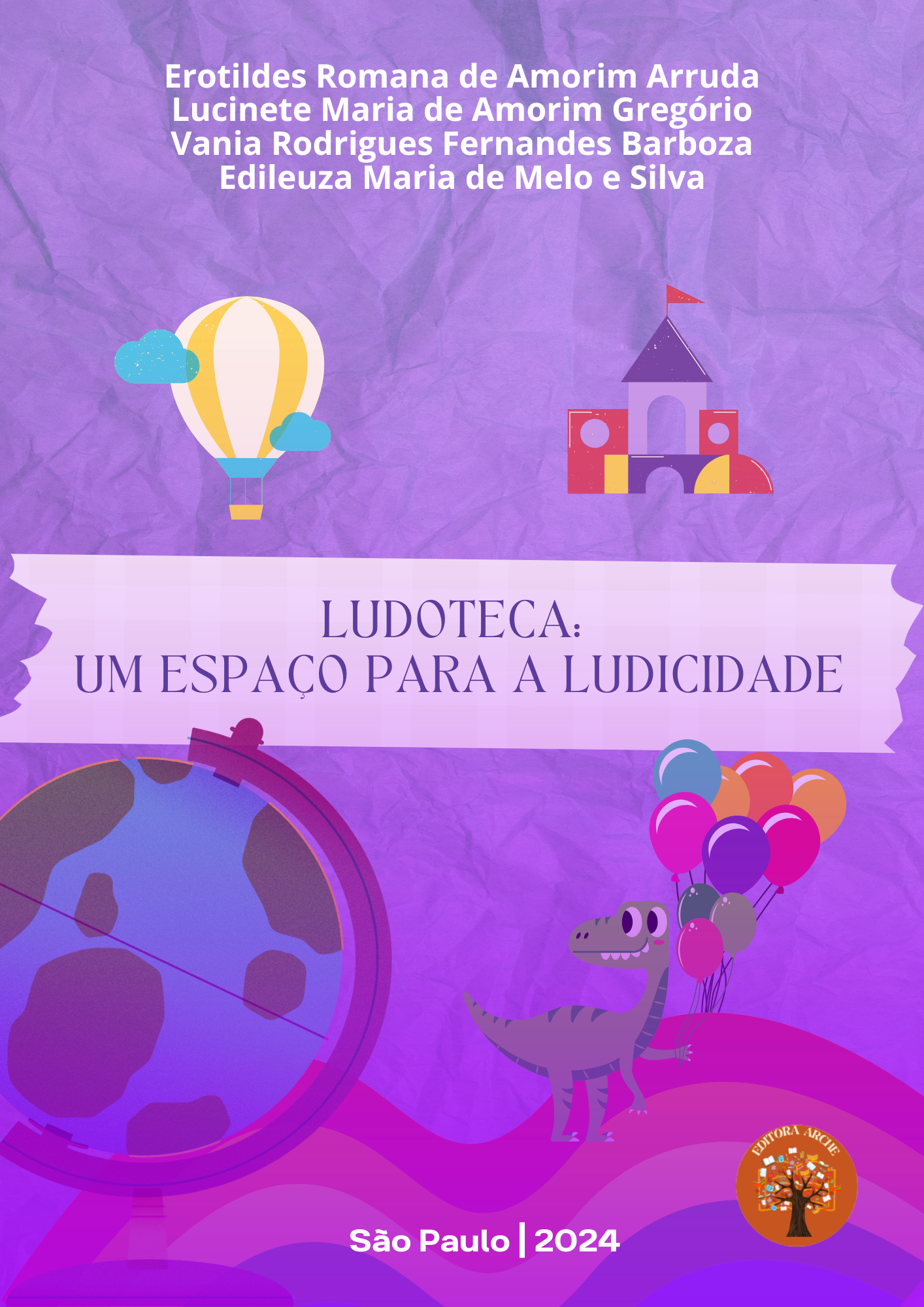TOY LIBRARY: A SPACE FOR PLAY
2nd edition
Keywords:
Learning. Playing. Child. Education. Playfulness. Toy library.Abstract
It is undeniable that games are present in the most diverse contexts, at school, at home, wherever children are. For them, playing is something more than natural. That is why we cannot fail to talk about children without involving their games. Playing promotes child development, through which children can learn more easily through games and play, because in addition to physical activity, it promotes intellectual and social stimulation.
Playfulness can arise in any educational environment, but there is also a specific place for children to practice games, the toy library or playroom, a place where research proposes to study.
The toy library is a space that provides fun, playful and magical activities for children, full of games, toys and games that enable the educational and social development of children through playful activities. Children can choose what they want to do in the toy library or participate in pre-planned suggestions.
It is important to encourage the act of playing. Many activities can be developed in the toy library and, as Santos (1997) says, this environment is created for children with the aim of developing their creative skills and enabling the construction of knowledge.
In this playful space, educators play an important role in reviving children's games, recommending activities that stimulate children's intellectual and social development. Because many children are deprived of the right to play, sometimes because they have to work to support their families, other times they cannot play in the street, for fear of violence, due to the reduction of outdoor recreation space, the proliferation of video games, the accelerated onset of adulthood, among other possibilities. The educator can act in an innovative way, always creating new situations/activities imbued with playfulness.
Therefore, by contributing to these activities and making this space well planned and widely available, this study investigated the importance of the activities developed in the toy library for the teaching and learning process of children.
Knowing the importance of these activities for the development of children, we proposed a study for this book:
What activities are developed in the toy library?
How does this space contribute to children's learning?
The toy library, depending on its activities, can stimulate children's interest in culture, entertainment, games and reading. It awakens in children a sense of responsibility and respect for what is not theirs, alongside the socialization that occurs in interactions with other children and the environment.
It should be a welcoming, stimulating, pleasant, engaging environment, prepared to encourage play, allowing access to a wide variety of games, toys, playful activities and games.
In this sense, the educator can be a professional qualified for this work, allowing playful activities to contribute to the development of children. In addition to higher education, the educator can and should always update the game and learn through new teaching strategies.
It is essential to rescue the playfulness of each child. The main function of a toy library is to encourage play and respect the needs of children. In addition to protecting children's rights, toy libraries strive to stimulate children's creativity and spontaneity, which are often threatened by mass educational technology.
Educators must show them everything they are capable of and provide a space where children can play as much as they want to develop their creativity, intelligence, socialization, and develop their child's potential.
In this book, we first theoretically address the importance of play for child development. In the next chapter, we contextualize a play space, the toy library/playroom. Thus, this book has contributed to helping to understand more about play, especially in its own space, the toy library, and its importance for children's development and learning, as well as demonstrating appreciation for play.
Downloads

Downloads
Published
How to Cite
Issue
Section
License
Atribuição CC BY
